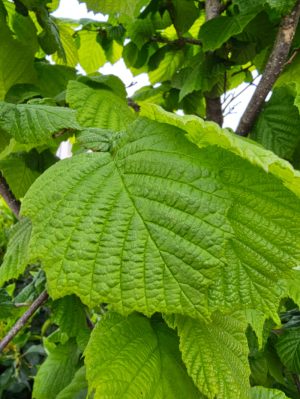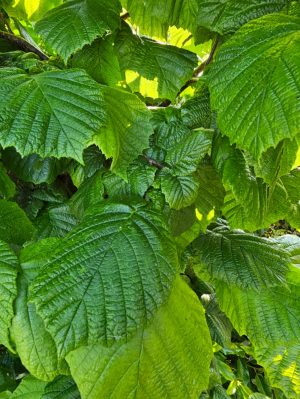Spotlight on The
Native Hazel Tree
About the native Hazel Tree
Crann Coll…
Corylus avellana
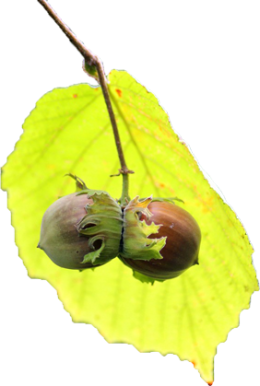
Overview: Hazel is a native Irish species which forms a lower tree layer in many of our deciduous woodlands. It also grows in hedgerows where the soil is rich and fertile. There are pure hazelwood forests in the Burren in Co. Clare covering extensive areas of limestone.
Trees grow from hazel nuts which are of course the seeds. These are collected and stored by squirrels and jays and trees can grow naturally from ones that are not retrieved for food. Hazel trees can grow up to 10 metres high. The tree can self-coppice and over time will grow new shoots from the base if it’s not cut or browsed by wild animals. Older trees thus appear to have many stems rather than a single trunk.
The broadest known Hazel tree in Ireland is a specimen from Cappawhite in Co. Tipperary which is 3.12 metres in girth.
Bark: It has a smooth pale brown bark and the twigs are downy.
Leaves: Hazel is a deciduous tree, and it loses all its leaves in Autumn. The new leaves open in April. They have short stalks and are round or broadly oval in shape. They can be up to 10 x 10cm in size. They have toothed edges and with a short point at the tip. They are dark green and roughly hairy on the upper surface. The lower surface is hairy too and also has soft white hairs on the leaf veins.
Flowers: Hazel trees carry male and female flowers on the same tree. As the tree is wind pollinated the flowers appear very early in the year, in February and March, before the leaves open. The male flowers are long, slender pendulous catkins which start to develop at the end of the previous year. They are pale yellow in colour and can be up to 5cm long. They are full of pollen which is carried by the wind to the female flowers.
The female flowers are tiny but are a conspicuous red colour, so they are easy to see. They are fertilised when the pollen lands on them.
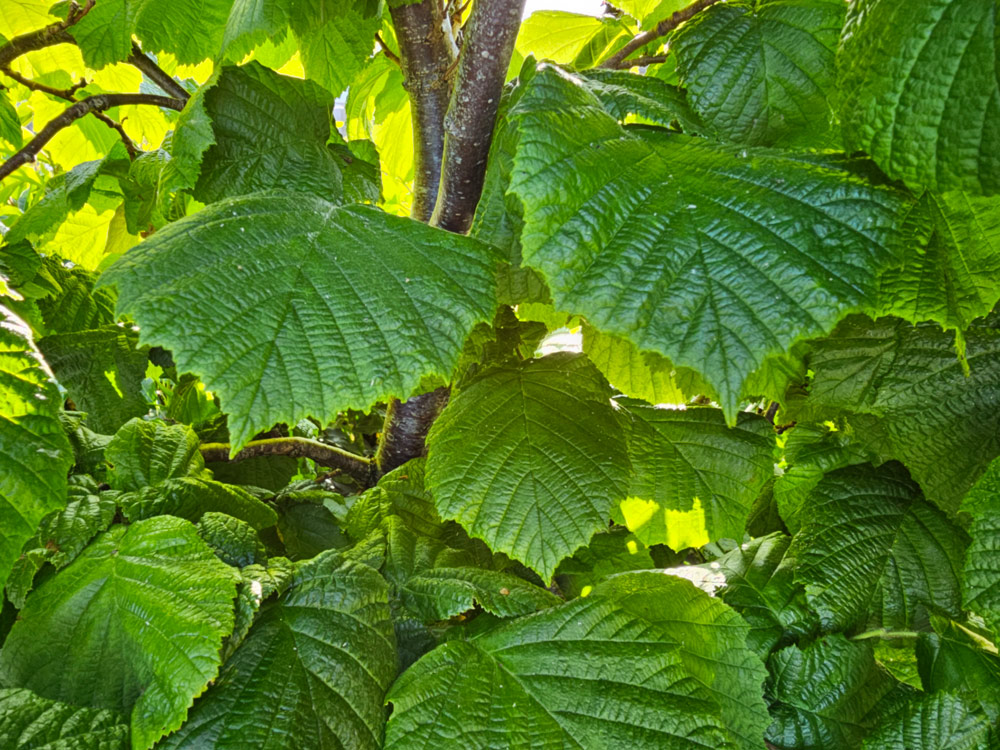
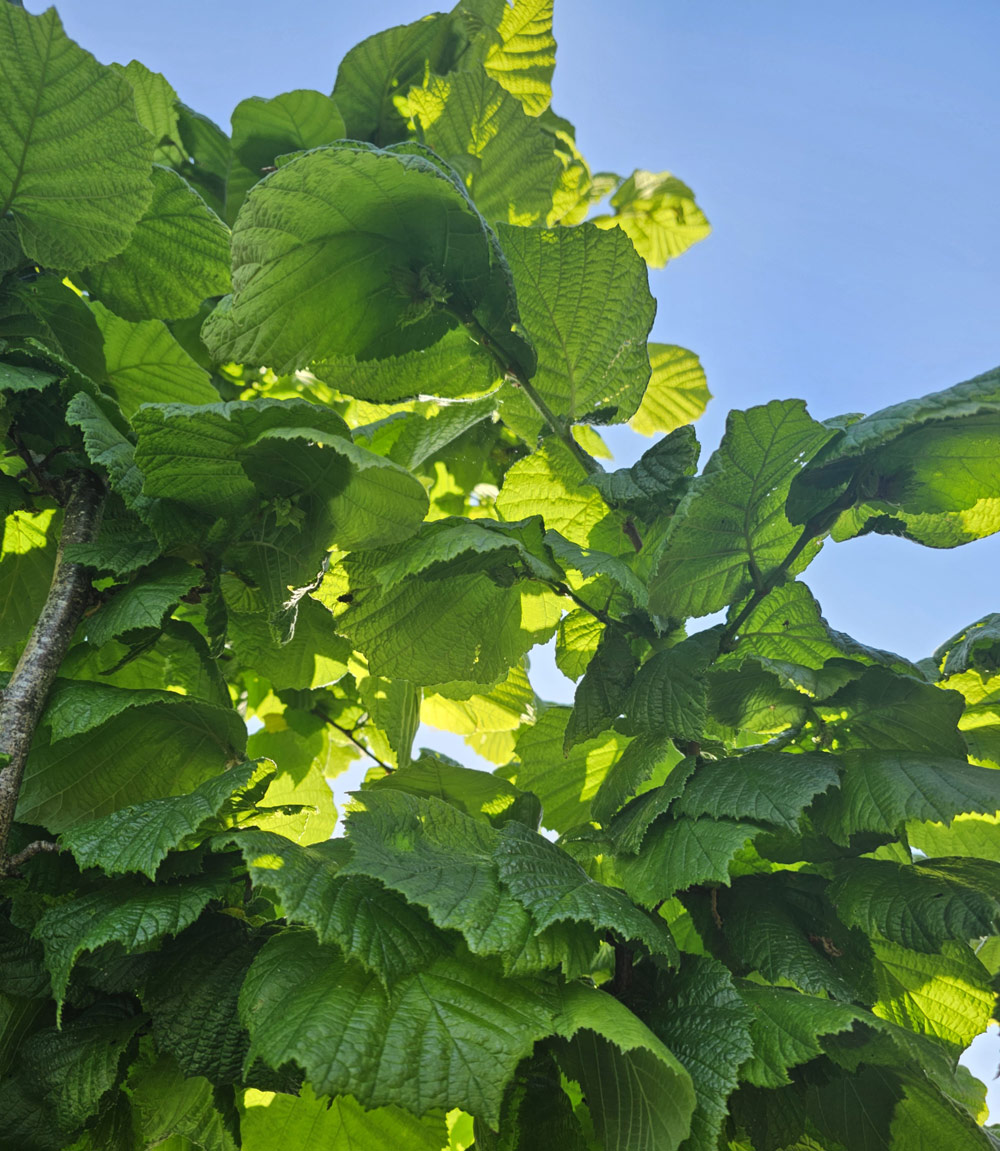
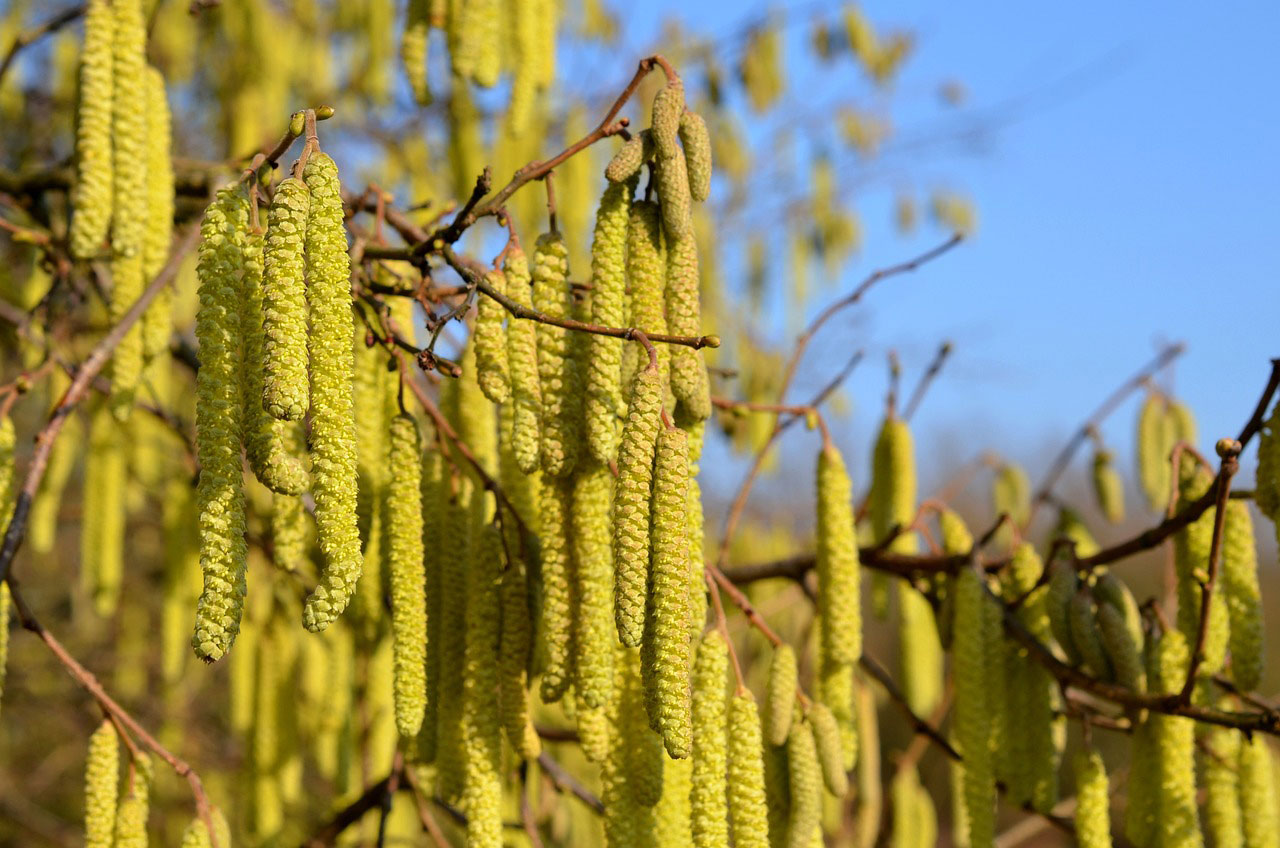
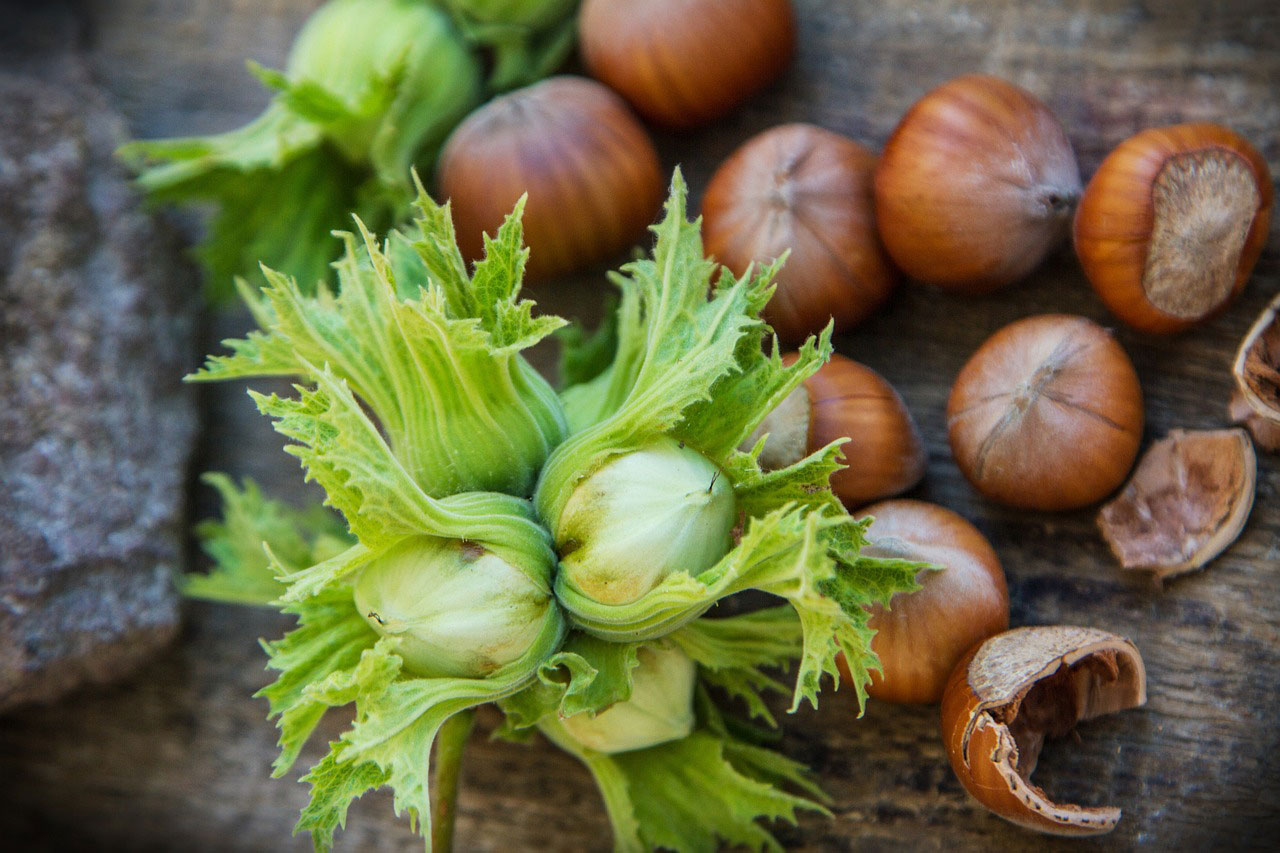
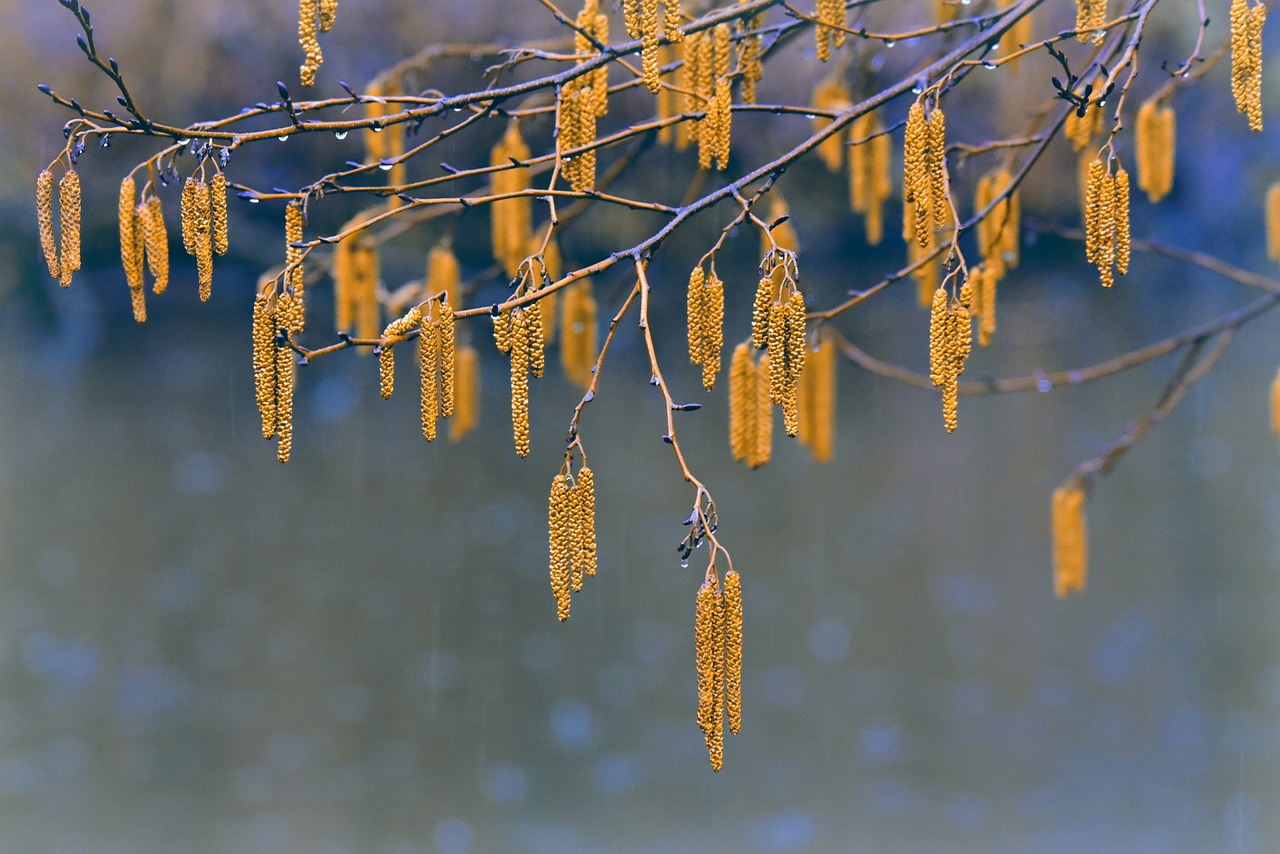
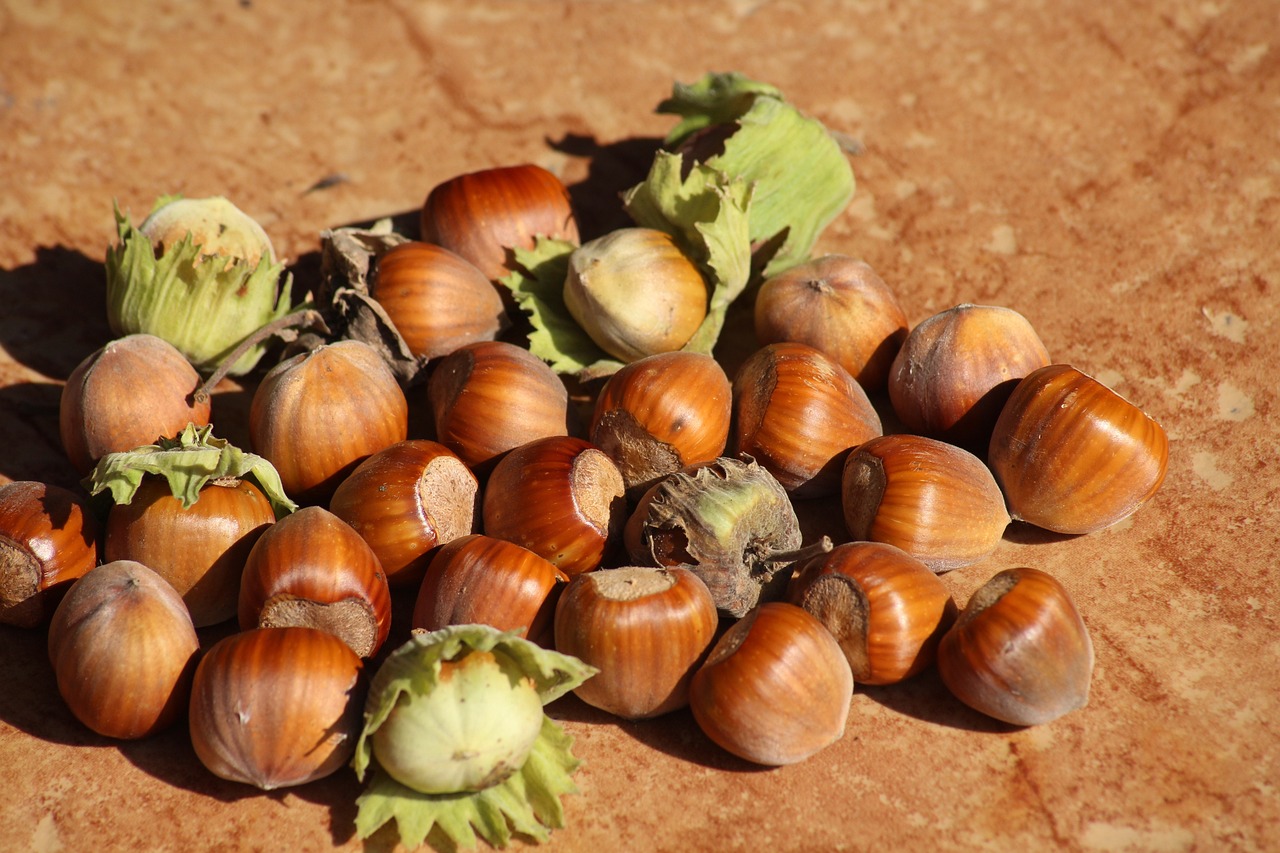
Nuts: Once pollinated the nuts begin to form. They grow in pairs usually and sometimes in groups of 3 or 4. Each nut is surrounded by ragged green leafy bracts. They are pale yellow, turning to brown as they ripen. Hazelnuts were an important source of food in Ireland from earliest times, providing valuable carbohydrates and fats. Try our delicious hazelnut spread recipe here.
Wood: Hazel was traditionally cropped by coppicing – usually on a seven-year rotation. This means cutting trees back hard – right to the ground. New long straight stems grew back which had many important uses. Hazel is prized for the durability and high elasticity of its wood. The straight rods were traditionally used for wattle, which was the frame of houses in Viking times a thousand years ago. It was made into staples and pegs for thatching. It was used for walking sticks, woven fencing and making baskets. It was also considered to be a good fuel for fires.
Customs: Forked hazel branches were used to divine where water might be underground when people were trying to decide where to dig a well. Certain people were gifted water diviners, and the forked branch would move violently in their hands when they walked over a strong underground spring.
Importance in Brehon Law: Hazel is included in the “nobles of the wood” category one of seven such important tree species. No doubt this is because of the importance of hazelnuts in the early Irish diet. Hazel was also important in the building of fences, enclosures and house-walls as the rods were pliable and fast growing. If such a tree was cut by someone who was not the owner there were severe penalties. The fine was two and a half milch cows no less. Hazel was the letter C in the Ogham alphabet and was the tree for August in the Celtic calendar.
Mythology: Hazel was considered to be the tree of wisdom. The Salmon of Knowledge who lived in the River Boyne got all its knowledge from eating the nuts that fell into the water from the nine Hazel trees that grew on its banks. The salmon was caught by the poet Finnéigeas and he gave it to Fionn Mc Cumhaill to cook. But Fionn tasted it while he was cooking it and he got all the knowledge instead.
Placenames: Many places in Ireland get their name from the Irish for hazel– coll. These include:
- Collon in Co. Louth. Gortahile, Gort an Choill, “the field of the hazel”, Co. Laois.
- Gortaquill, Co. Cavan.
- Lisaquill, Lios an Choill, “the ringfort of the hazel” Co. Longford and Co. Monaghan.
- Lissakyle, Co. Tipperary.
- Garraun (Coyle), Garrán Coill, “grove of the hazel” Co. Galway.
- Garrankyle, Co. Tipperary.
- Barnacoyle, Bearna Choill, “gap of the hazel”, Co. Wicklow.
- Barnankile, Bearna an Choill, “the gap of the hazel”, Co. Waterford.
- Glenhull, Gleann Choll, “glen of hazels”, Co. Tyrone.
Medical Uses: Medicinally, powdered hazelnuts mixed with honey and water can soothe a troublesome cough. It was also used medicinally to treat varicose veins and burnt hazel stick ash was put on burns. The bark was applied to boils and cuts to cure them. Hazelnuts are very nutritious being full of calcium, protein and potassium and so they are a healthy food to eat.
Wildlife and Hazel
The male catkins provide a vital source of pollen for early foraging honeybees in spring.
The largest number of species using hazel are moths, and include the November Moth (Epirrita dilutata), the Pale November Moth (E. christyi) and the Vapourer (Orgyia antigua), unusual in that the female is virtually wingless. The Nut Tree Tussock (Colocasia coryli), and the Buff-Tip (Phalera bucephala) are well camouflaged common species that also breed in gardens on hazel leaves.
Gall mites, beetles and leaf hoppers all feed on hazel leaves too. In all 73 insect species are associated with hazel.
Hazelnuts are prized by squirrels, mice, bank voles, woodpeckers and jays as well as by ourselves.
When applying for your sapling tree, you need to consider where the tree will live and grow for the rest of its life.
